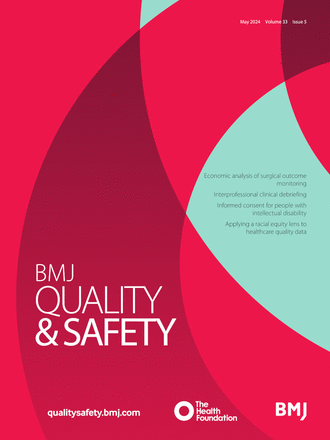了解医疗保健中的语言不平等:从技术转向社会
IF 5.6
1区 医学
Q1 HEALTH CARE SCIENCES & SERVICES
引用次数: 0
摘要
当患者和临床医生语言不通时,可能产生的质量和安全问题似乎显而易见。然而,有关语言与一系列健康结果之间关系的文献浩如烟海,种类繁多。在本期的《BMJQS》上,Chu 等人分享了他们对患者的口语与再入院和急诊科(ED)复诊之间的关系进行的系统回顾和荟萃分析的结果1。此外,他们还发现父母讲非主要语言的儿童有更多的急诊室复诊经历。作者的研究成果是对一些不同文献的深思熟虑的总结,并为考虑医疗保健中语言不平等这一更广泛研究领域的关键挑战提供了一个起点。当语言被用作研究中的定量变量时,会出现几个挑战。第一个挑战是定义问题。Chu 等人指出,在他们所审查的研究中,对语言的测量方法各不相同,这限制了他们的研究结果。一些研究使用的是主要语言能力,另一些研究使用的是首选语言,还有一些研究使用的是主要语言。每种测量方法都评估不同的结构。因此,当对根本不同的概念进行测量和比较时,就很难汇总不同研究的结果。另一个挑战是,口语的边界被认为是固定和明确的。因此,语言往往被视为二元变量,以便于在讲优势语言的人和讲非优势语言的人之间进行比较。然而,讲非优势语言的人可能对优势语言有一定的熟练程度。此外,语言的使用也与语境有关。例如,病人的主要语言可能是阿拉伯语,但...本文章由计算机程序翻译,如有差异,请以英文原文为准。
Understanding linguistic inequities in healthcare: moving from the technical to the social
When patients and clinicians do not speak the same language, the quality and safety concerns that can arise seem evident. However, the literature on the association between language and a host of health outcomes is vast and varied. In this issue of BMJQS , Chu et al share the results of their well-conducted systematic review and meta-analysis of the relationship between a patient’s spoken language and hospital readmissions and emergency department (ED) revisits.1 They report that adult inpatients who prefer a non-dominant language are more likely to experience an unplanned hospital readmission or ED revisit after discharge. Moreover, they found that children whose parents spoke a non-dominant language had more ED revisits. The authors’ work is a thoughtful synthesis of a somewhat disparate literature and offers a starting point to consider key challenges in the broader area of research on linguistic inequities in healthcare. There are several challenges that arise when language is used as a quantitative variable in research. The first challenge is one of definition. Chu et al describe the heterogeneous approach to the measurement of language in the studies they reviewed as a limitation of their results. Some studies used dominant language proficiency, while others used preferred language, and yet others used primary language. Each measure assesses a different construct. And so, it becomes difficult to aggregate outcomes across studies when fundamentally different concepts are measured and compared. Another challenge is that the borders around spoken language are assumed to be fixed and well defined. Thus, language is often made into a binary variable to facilitate comparisons between dominant language speakers and non-dominant language speakers. Yet, speakers of a non-dominant language may have some proficiency in the dominant language. Furthermore, the use of language is contextual. For example, a patient’s primary language may be Arabic, but …
求助全文
通过发布文献求助,成功后即可免费获取论文全文。
去求助
来源期刊

BMJ Quality & Safety
HEALTH CARE SCIENCES & SERVICES-
CiteScore
9.80
自引率
7.40%
发文量
104
审稿时长
4-8 weeks
期刊介绍:
BMJ Quality & Safety (previously Quality & Safety in Health Care) is an international peer review publication providing research, opinions, debates and reviews for academics, clinicians and healthcare managers focused on the quality and safety of health care and the science of improvement.
The journal receives approximately 1000 manuscripts a year and has an acceptance rate for original research of 12%. Time from submission to first decision averages 22 days and accepted articles are typically published online within 20 days. Its current impact factor is 3.281.
 求助内容:
求助内容: 应助结果提醒方式:
应助结果提醒方式:


